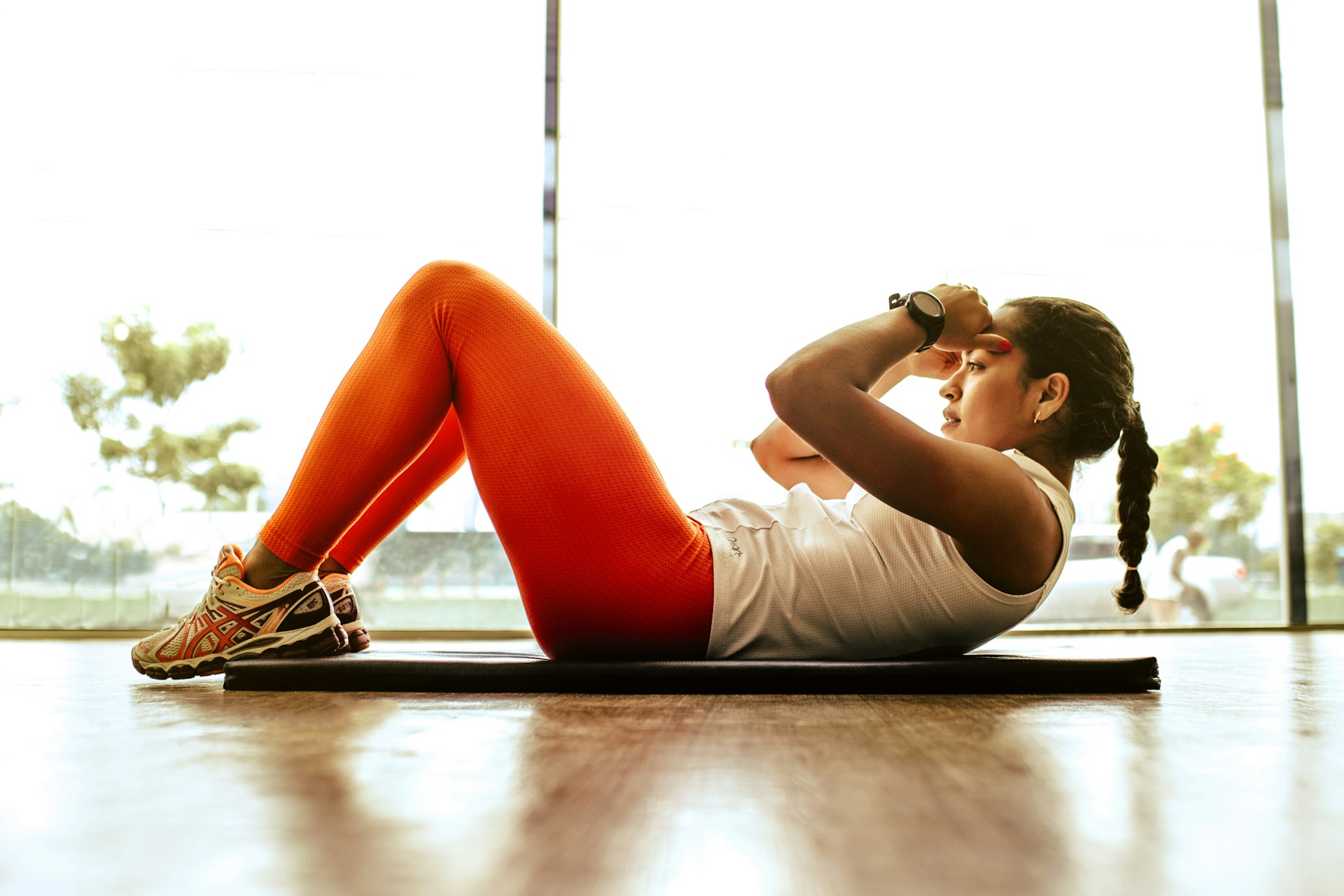
Exercise as Medicine: The Anti-Aging Power of Physical Activity
If I could prescribe a single intervention that would prevent chronic disease, maintain cognitive function, preserve mobility, and extend healthy lifespan, it would be regular physical exercise. As both a sports medicine physician and researcher in aging, I've spent decades studying how exercise affects the human body across the lifespan. The evidence is overwhelming: exercise is perhaps the most powerful anti-aging medicine we have available.
Yet despite this knowledge, physical inactivity remains one of the leading risk factors for premature death and disability worldwide. The misconception that exercise is primarily for young athletes or weight loss has prevented many people from accessing its profound health benefits. The truth is that exercise becomes increasingly important as we age, serving as a cornerstone of healthy aging and disease prevention.

The Biological Mechanisms of Exercise and Aging
To understand how exercise combats aging, we must first examine what happens to our bodies as we grow older. Aging is characterized by several key biological processes: cellular damage accumulation, mitochondrial dysfunction, chronic low-grade inflammation, hormonal changes, and progressive loss of muscle mass and bone density. Exercise directly counteracts many of these age-related changes at the cellular and molecular level.
At the cellular level, exercise stimulates the production of new mitochondria—the powerhouses of our cells. This process, called mitochondrial biogenesis, is crucial because mitochondrial function naturally declines with age, leading to reduced energy production and increased oxidative stress. Regular exercise maintains and even improves mitochondrial function, essentially keeping our cellular engines running efficiently.
Exercise also activates powerful cellular repair mechanisms. Physical activity increases the production of brain-derived neurotrophic factor (BDNF), which supports the growth and survival of neurons. It enhances the activity of sirtuins, proteins involved in cellular repair and longevity. Additionally, exercise promotes autophagy—the cellular housekeeping process that removes damaged proteins and organelles, helping maintain cellular health.
Cardiovascular Benefits: Keeping the Heart Young
The cardiovascular system undergoes significant changes with aging, including arterial stiffening, reduced cardiac output, and decreased oxygen uptake capacity. Regular exercise provides remarkable protection against these age-related changes. Aerobic exercise improves heart muscle function, maintains arterial flexibility, and enhances the efficiency of oxygen delivery throughout the body.
One of the most impressive findings in exercise research is that physically active older adults often have cardiovascular fitness levels comparable to sedentary individuals decades younger. This isn't just about numbers on a fitness test—it translates to real-world benefits like climbing stairs without breathlessness, maintaining energy throughout the day, and reducing the risk of heart disease, stroke, and other cardiovascular conditions.
Exercise also helps maintain healthy blood pressure and cholesterol levels. Regular physical activity can lower systolic blood pressure by 5-10 mmHg, reduce LDL (bad) cholesterol, and increase HDL (good) cholesterol. These effects occur regardless of age, making exercise a powerful tool for cardiovascular health maintenance throughout life.
The Role of High-Intensity Interval Training
Recent research has highlighted the particular benefits of high-intensity interval training (HIIT) for older adults. HIIT involves short bursts of intense exercise alternated with recovery periods. This type of training has been shown to be especially effective at improving mitochondrial function, cardiovascular fitness, and insulin sensitivity in older adults.
A landmark study found that HIIT was more effective than moderate-intensity continuous exercise at reversing age-related cellular changes. Participants following a HIIT program showed increased mitochondrial capacity and improved cellular energy production. This suggests that the intensity of exercise, not just the quantity, plays a crucial role in its anti-aging effects.
• Improved mitochondrial function and cellular energy production
• Enhanced cardiovascular health and arterial flexibility
• Preserved muscle mass and bone density
• Better cognitive function and neuroprotection
• Reduced chronic inflammation
• Improved insulin sensitivity and metabolic health
• Enhanced immune system function
Musculoskeletal Health: Maintaining Strength and Mobility
Age-related loss of muscle mass, known as sarcopenia, begins as early as the third decade of life and accelerates after age 50. Without intervention, adults can lose 3-8% of their muscle mass per decade, leading to weakness, frailty, and increased fall risk. Resistance training is the most effective intervention for preventing and reversing sarcopenia.
Strength training doesn't just maintain muscle mass—it improves muscle quality, power, and functional capacity. Regular resistance exercise increases the size and number of muscle fibers, enhances neuromuscular coordination, and maintains the ability to generate force quickly. These adaptations are crucial for maintaining independence and preventing falls, which are a leading cause of injury and disability in older adults.
Bone health is equally important for healthy aging. Weight-bearing and resistance exercises stimulate bone formation and help maintain bone density. This is particularly crucial for postmenopausal women, who experience accelerated bone loss due to declining estrogen levels. Regular exercise can reduce the risk of osteoporotic fractures and help maintain skeletal integrity throughout life.
Cognitive Benefits: Exercise for Brain Health
Perhaps one of the most exciting areas of exercise research involves its effects on brain health and cognitive function. Regular physical activity has been shown to improve memory, attention, processing speed, and executive function. More importantly, exercise appears to protect against age-related cognitive decline and reduce the risk of dementia.
Exercise promotes neuroplasticity—the brain's ability to form new neural connections and adapt to new challenges. Physical activity increases the production of BDNF, which supports the growth of new neurons and synapses. Exercise also improves blood flow to the brain, reduces inflammation, and promotes the clearance of toxic proteins associated with Alzheimer's disease.

The Hippocampus and Memory
The hippocampus, a brain region crucial for memory formation, typically shrinks with age. However, studies have shown that aerobic exercise can actually increase hippocampal volume in older adults. This neurogenesis—the formation of new brain cells—was once thought impossible in adult humans but has been demonstrated in response to regular physical activity.
The memory benefits of exercise extend beyond structural changes. Regular physical activity improves both working memory and long-term memory consolidation. These cognitive benefits appear within weeks of starting an exercise program and continue to accumulate with sustained activity.
Metabolic Health and Longevity
Exercise profoundly affects metabolic health, which plays a crucial role in the aging process. Regular physical activity improves insulin sensitivity, glucose metabolism, and lipid profiles. These metabolic improvements reduce the risk of type 2 diabetes, metabolic syndrome, and other age-related diseases.
The relationship between exercise and longevity is well-established. Large population studies have consistently shown that physically active individuals live longer and have lower rates of chronic disease. The dose-response relationship suggests that even modest amounts of exercise provide significant benefits, with additional benefits accruing from higher activity levels.
Exercise also affects several biomarkers of aging. Regular physical activity is associated with longer telomeres—protective caps on chromosomes that shorten with age. Exercise reduces markers of chronic inflammation, which is implicated in many age-related diseases. These molecular changes suggest that exercise literally slows the aging process at the cellular level.
Immune System Support
The immune system undergoes significant changes with aging, a process called immunosenescence. This results in increased susceptibility to infections, reduced vaccine effectiveness, and higher cancer risk. Regular moderate exercise helps maintain immune function and may slow immunosenescence.
Exercise acts as a mild stressor that strengthens the immune system's adaptive capacity. Regular physical activity increases the circulation of immune cells, enhances the function of natural killer cells, and improves the body's ability to mount an immune response. However, it's important to note that excessive exercise can temporarily suppress immune function, emphasizing the importance of appropriate intensity and recovery.
Practical Exercise Recommendations for Healthy Aging
Getting Started Safely
For individuals who have been sedentary, starting an exercise program requires careful planning and gradual progression. I always recommend consulting with a healthcare provider before beginning any new exercise regimen, especially for those with existing health conditions or those over 65. A basic health screening can identify potential risks and help tailor an appropriate exercise prescription.
The key principle is to start slowly and progress gradually. Even five to ten minutes of daily activity can provide health benefits for previously sedentary individuals. The goal is to build a sustainable habit rather than achieve immediate fitness gains. Walking is an excellent starting point—it's low-impact, accessible, and can be easily adjusted for fitness level.
Components of a Comprehensive Exercise Program
An effective anti-aging exercise program should include four key components: aerobic exercise, resistance training, flexibility work, and balance training. Each component addresses different aspects of healthy aging and functional independence.
Aerobic exercise should be performed most days of the week, with a goal of 150 minutes of moderate-intensity activity or 75 minutes of vigorous-intensity activity per week. This can include brisk walking, swimming, cycling, dancing, or any activity that elevates heart rate and breathing.
Resistance training should be performed at least twice per week, targeting all major muscle groups. This doesn't necessarily require a gym membership—bodyweight exercises, resistance bands, or household items can provide effective resistance. The key is progressive overload—gradually increasing the challenge to continue stimulating muscle growth and strength gains.
Flexibility and mobility work help maintain range of motion and prevent stiffness. Daily stretching, yoga, or tai chi can improve flexibility while also providing stress reduction benefits. These activities become increasingly important as we age and joint mobility naturally decreases.
Balance training is crucial for fall prevention, especially for adults over 65. Simple exercises like standing on one foot, heel-to-toe walking, or specific balance training programs can significantly reduce fall risk and improve confidence in daily activities.
Overcoming Common Barriers
Despite the overwhelming evidence for exercise benefits, many older adults face barriers to regular physical activity. Common concerns include fear of injury, lack of time, cost, or feeling that they're "too old" to start exercising. Addressing these barriers is crucial for promoting healthy aging through physical activity.
The fear of injury is often overblown—the risks of remaining sedentary far outweigh the risks of appropriate exercise. Working with qualified fitness professionals, starting slowly, and listening to your body can minimize injury risk. The "too old" mindset is particularly counterproductive, as research shows that exercise benefits occur at any age, even in very elderly individuals.
Time constraints can be addressed by incorporating activity into daily routines—taking stairs instead of elevators, parking farther away, or doing household chores more vigorously. Cost concerns can be managed through free activities like walking, bodyweight exercises, or community programs for older adults.
The Social Dimension of Exercise
Group exercise activities provide additional benefits beyond physical fitness. Social interaction during exercise can improve adherence, provide motivation, and contribute to mental health and cognitive function. Activities like group fitness classes, walking clubs, or recreational sports leagues combine physical activity with social engagement.
The social aspect of exercise is particularly important for older adults, who may be at risk for social isolation. Regular group activities provide structure, social support, and a sense of community that contribute to overall well-being and quality of life.
Looking Forward: Exercise as Preventive Medicine
As our understanding of exercise and aging continues to evolve, it becomes increasingly clear that physical activity should be viewed as preventive medicine. The prescription is clear: regular, varied physical activity that includes aerobic exercise, strength training, flexibility work, and balance training.
The goal isn't to stop aging—that's neither possible nor desirable. Instead, the goal is to optimize the aging process, maintaining function, independence, and quality of life for as long as possible. Exercise provides a powerful tool for achieving this goal, with benefits that compound over time.
Starting an exercise program is never too late, but starting earlier provides greater cumulative benefits. Whether you're 30 or 80, sedentary or already active, there are opportunities to use exercise as medicine for healthy aging. The investment in regular physical activity pays dividends in improved health, enhanced quality of life, and increased longevity. In the prescription for healthy aging, exercise isn't optional—it's essential.







